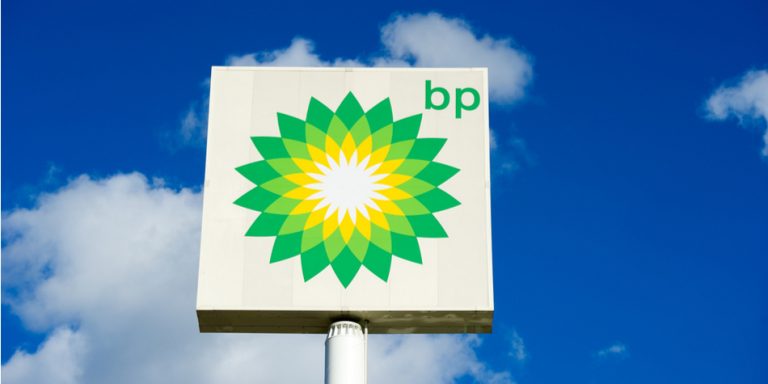Three weeks ago, yours truly here penned a thesis that the dividend BP plc (ADR) (NYSE:BP) was dishing out wasn’t exactly secure, as the oil giant was essentially spending more than it was making. With BP stock then above $38 a share, the dividend had inched higher than 6%
Although the landscape is gradually improving for it as well as rivals like Chevron Corporation (NYSE:CVX) and Exxon Mobil Corporation (NYSE:XOM), the progress wasn’t taking shape fast enough to let the payouts continue at their current rate.
Then the company posted its third-quarter numbers, soundly beating earnings and revenue estimates, and leaving year-ago figures in the dust. The biggest prod for the improved BP stock price we’ve seen emerge since that report, however, is arguably the fact that BP is going to start buying shares back, the first of the major oils to do so since the 2014/2015 meltdown. Fewer outstanding shares of BP stock will make it easier for the company to afford its straining dividend payout — now at 5.9% — as well as the gradually widening margins.
It’s not the engineering of better per-share metrics that will do the most for BP’s dividend, however. It’s the good old-fashioned increase in the price of oil that’s offering the most help, and should continue to do even more for its payout going forward. There some big “ifs”, though.
The Buyback is a Mixed Bag
The short version of a long story: I still contend that, assuming nothing dramatic changes, the dividend isn’t as impervious as some have assumed it may be after its Q3 report. As my InvestorPlace colleague Dana Blankenhorn, recently opined:
‘BP, in short, is a company that is trying hard to make up for lost time, and lost profits, and taking on much more risk – political, environmental and financial – than integrated oil rivals like Exxon Mobil or Chevron, which are increasingly focused on domestic production and refining operations.’
It’s also worth noting that the newly planned buyback may not even offset the dilution being created by its scrips program, which is paying some shareholders the dividend in the form of shares. So, no, it’s not exactly a reason for owners of BP stock to celebrate, and the celebration has indeed been modest since the news was posted.
Blankenhorn was right and may have been more prescient than even he realized a few days ago, however, when he also explained: “Still, your investment could work out because BP is more leveraged to good oil patch news than its rivals.”
Fast forward to today.
“Good Oil Patch” Dead Ahead
While the buyback and improved operating earnings the company posted last week may or may not have a significant impact on the relative affordability of BP’s dividend, there is now a good reason to entertain the idea that the company may well see wider margins ahead — crude oil prices are knocking on the door of multi-year highs, with a strong tailwind making it louder by the day.
The chart below is both interesting and surprising. Interesting because as of the most recent look, the EIA is only calling for an average price of $54.07 per barrel of crude oil for 2018. The current price? It’s $55.33 per barrel, depending on which set of oil futures you’re looking at (though they all trade closely).
It’s not just the current value of crude that bodes well for BP stock and its dividend though. To an experienced technical analyst, the shape of crude’s chart also suggests there’s more upside ahead, as the commodity continues to be squeezed into the tip of a converging wedge pattern.
This isn’t the way it’s “supposed to be.” Analysts have been consistently saying oil is destined to remain in a rut for a long while, if not forever. The term “peak demand” has displaced the phrase “peak oil,” pointing to the idea that the world is increasingly careful about not overusing oil, and is getting better about using oil efficiently.
The shape of the chart suggests traders may be thinking — and betting — otherwise.
Bottom Line for BP Stock
Realistically speaking, crude oil prices are more likely to back away from the ceiling around $56 per barrel rather than breaking above that line, at least initially. With rising lows and increasing buying volume on the way up though, the second or third try may well push prices above $56 sooner rather than later. That’s when and where the fireworks really start, as it will force quite a few observers (professionals and amateurs, alike) to rethink what they thought they knew about oil.
Remember, nobody saw the 2014/2015 meltdown coming, so it stands to reason they won’t see the recovery coming either.
As for BP stock, the company disclosed that its cash-flow-breakeven price for oil is $49, so oil prices at or above $56 would drive profits at a level we’ve not seen from the company since 2014. That will push cash flow decidedly past the dividend of 60 cents per quarter it’s presently paying out. Thing is, that’s likely to be the only thing that will push its necessary profit convincingly past what it’s paying out to shareholders each and every quarter.
But hey… at least it’s on the radar.
As of this writing, James Brumley did not hold a position in any of the aforementioned securities. You can follow him on Twitter.

